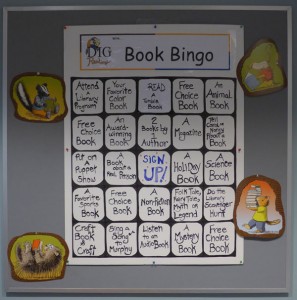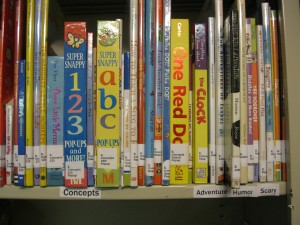Reading and writing skills are essential to the 21st century communication. Emails, text messaging, blog posts…etc., they all require sufficient reading and writing skills. Teachers spend a lot of time and effort to ensure that students are equipped with the skills for communication. Fostering students’ love and passion in reading is equally important, and teachers spend as much effort to encourage reading as they could possibly do. As a music teacher who had been allocated to different schools for the last many years, I have the privilege to work in different schools in the district and observe different strategies in place to foster school-wide reading culture. There are two strategies that I was very fond of, with one that I think was quite effective, while the other one “faded out” as time passed.
Drop Everything and Read (D.E.A.R.)
One school that I had worked in for almost 5 years designated about 20 mins everyday after lunch as D.E.A.R time. Students were given 5 mins after lunch to come in and settle down after outside play, had one or few books ready for D.E.A.R. Then the office would put some classical music on through the PA system, and everyone, including students, staffs, office staffs and administrator, would drop their work and read. I found this strategy very effective as reading time was build into the students’ routine, and adults were role modelling . Everyone at the school are well-prepared for that time of the day and always have a book, or maybe a list of books ready for the daily reading time. Moreover, the classical music helped calming everyone down from all the excitement at lunch time. By the end of D.E.A.R., students were emotionally calm and ready to focus on their afternoon learning.
Reading for the Stars
One year, a teacher-librarian organized a school-wide reading event, “Reading for the Stars.” Everyone, including students and staffs, at the school would have their photos on a star. Students’ stars were posted on their classroom doors, while the staffs’ stars were posted on the bulletin board across from the office. Each time a person finished reading a book, he/she would go to the TL and get a sticker to put on his/her star. At the beginning of the year, everyone was excited and was reading and getting stickers on their stars. As the months go by, staffs and students got busy with classroom works, Christmas concert, sports activities, etc., leisure reading was slowing down. Eventually, it seemed like no one cared about the stickers anymore. I think busyness was not the main cause of the ineffectiveness of the strategy, but also there was no incentives to motivate readers. I think it is a terrific strategy to have a school-wide event for reading, but readers need motivation to participate.
My Inquiry
I have never been a teacher-librarian, therefore, I do not have any hands-on experience in promoting school-wide reading. Hence, I went to Google Scholar to search for resources: images, videos, blogs…etc. and I came across a YouTube video titled “Reading in School. Episode One: Elementary.” My first impression was that the video was done by a teenage girl who would like to be a “YouTube star.” However, the title drew my attention and I watched it to see what the girl had to say. It turned out to be a university student, Ariel Bissett, who loves reading and shared about her opinion on the four elementary school reading strategies that she had experienced. Ariel majors in English at university and likes to share online her passion in reading. Her opinion prompted me to re-think what could I change in my practice that would increase the effectiveness of a reading strategy.
1.Colour-coded levelled primary books
Ariel’s opinion: She thinks that only a few students in the class were eagered to reach to the highest level, but most of the students did not really care because there was no incentives for reading to the highest level.
What could I do?
Rewards. Incentives for reaching certain level. As I was googling about library reading program, I found this picture:
Photo in courtesy of: http://www.thebedfordcitizen.org/2013/07/05/summer-activities-for-kids-at-the-bedford-free-public-library/
This book bingo not only provides an incentive to motivate reading, but also encourages students to read different kinds of books. Teachers could customize the bingo card according to student’s needs, or in general, different primary and intermediate level. If I were a teacher-librarian, I would definitely promote “Book Bingo” in my library.
2. Teacher Read Aloud
Ariel’s opinion: Students were not focused on what the teacher was reading.
What could I do?
Drama is another interest of mine. I love reading a story to class and ask the class to dramatize it. My students love it, it makes the story come to live and help students to think in the characters’ shoes.
3. Silent Reading
Ariel’s opinion: Teachers seemed to be not care if students were reading or not as long as they had a book in hand. There was no follow-up on what students had read during silent reading time.
What could I do?
Last year, one of the intermediate teacher at my school created an Edmodo group for her class called “Reading Club.” I joined the group and have been reading students’ posts on what they have been reading. I think social media is a great way for students to share about their reading. Maybe students could be allowed time after silent reading to write a post on a class blog, hoping this would motivate students to focus on reading during silent reading. Also, teachers could response and give comments on post to show that they do care about students’ readings.
4. Library time
Ariel’s opinion: Students were socializing instead of looking for books to read. Teacher-librarian would encourage students to find a book they like but did not help them finding one.
What could I do?
Creative catalog system would would make finding books easier for students.
Photo in courtesy of: https://lwplibrary.wordpress.com/tag/bisac/
If books could be shelf according to subjects, with the subjects labelled on the shelf, students would be able to find the books they like easier and faster.
In conclusion, Ariel stated that all strategies are good, but teacher’s involvement in students’ reading is the key to foster students’ love and passion in reading. I could not agree more. Program is not the most important, it is the interpersonal relationship that makes a program effective.
To end my post, I would like to share the following CTV video, which my friend shares on Facebook. It shows how a teacher use ICT to encourage her students to read with others, to tweet about what they have read. “Global Read Aloud” would be in my “must-try” list when I have the opportunity to be a teacher-librarian.


